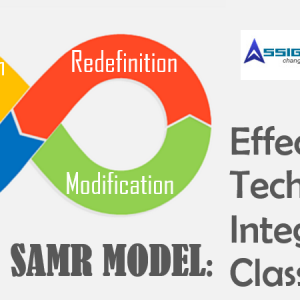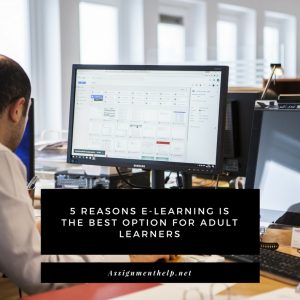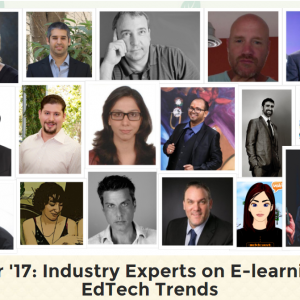Top 5 Emerging EdTech Trends you Must Know in 2016
New Year is the time when we all start thinking about changes. Whether it is about making new beginnings, amending our habits or adding more depth to what we are already doing. New Year is the time to set new goals and think about adopting newer practices. 2015 remained big in terms of growing popularity of blended teaching models, gamification trends, more personalized and adaptive learning environments backed by big data analysis, growth in mobile learning and BYOD trends as well as deepening of state of the art edtech products such as 3D printers, VR by Oculus Rift, iPad Pro, Surface Pro tablet, just as we thought. Well into the first week of the New Year, it cannot be too soon to start anticipating new education technology trends that usher new teaching classroom practices and change teaching –learning dynamics in 2016.
We are looking at the top 5 big trends in e-learning and education technology that can change the teaching-learning in 2016 and beyond. Below are some key ideas for online educators as well as for teach-preneurs in E-learning and educational technology.
Internet of Things: Connected Classrooms
Classrooms of 2015 embraced a wide variety of technology trends ranging from mobile devices to wearable technology. 2016 will be all about connected learners and learning spaces in which various computing technologies will be tied together in the Internet of Things. Internet of Things refers to a network of connected “things” embedded with sensors, cameras, software, databases, massive data centres and network connectivity which allows them to collect and exchange data. According to a report by Cisco, 50 billion connected things will be in use by 2020.
A connected classroom will allow learners as well as teachers to store and share cloud based information while taping into artificial-intelligence-enhanced data analytics. The classrooms of 2016 and beyond will take advantage of effortlessly ambient and immersive learning spaces that feed on the massive data output of an invisibly connected Internet of Things space. This connected network of information and massive databases will allow for intelligent analytics and real-time actionable feedback to improve learner’s performance.
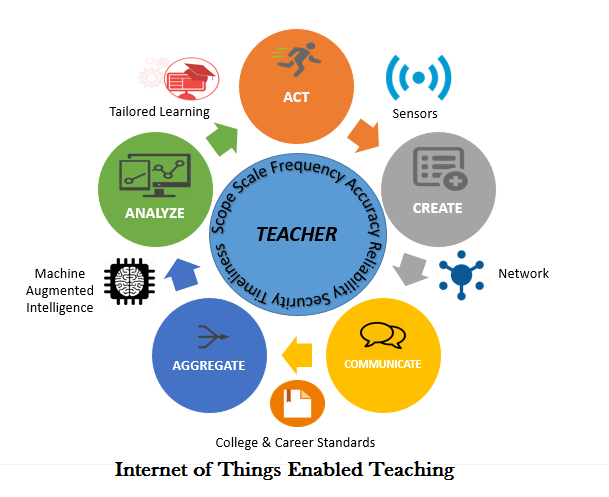
Teachers and Schools can start out small by integrating an intelligent system to connect devices such as digital whiteboards, smart TV and teachers’ tablet along with an assessment and feedback system to track and report student performance. . The connected AV devices make it easier for teachers to organize and push the learning material across various multimedia devices and engaging students differentially through them. Take a step further, wearables can be used to authenticate and log-in students automatically as they enter a classroom. More advanced institutions can install sensors and beacons to push test worksheets directly onto learner’s device. Teachers can utilise Smart Assessment tools such as MasteryConnect to instantly scan and grade bubble sheet responses and get real-time feedback reports as well as export these reports and feedbacks onto Student Information Systems from the push of a button. Armed with these actionable reports, predictive analytics based course design systems can help teachers to craft personalised learning plans for all students to balance the areas which students have mastered (or not). There are other instances of students using QR codes to search for books in the library
Connected devices help to save precious money, time, efforts and resources being spent on managerial activities by automatically sending the data to the right place at the right places along with predictive analytics to minimise the need for blanket trail experimentation on learners. The Internet of Things in Classroom allows teachers to push day-to-day procedures (such as taking attendance, distributing worksheets, drawing rough diagrams on blackboards) into the background while actual productive teaching experiences take center stage. Most experienced educators have an intuitive understanding of learner’s behaviour and are able to complexly map it to attributes such as differential cognitive abilities, grade history, adaptive and tailored teaching methods. With IoT, even the new teachers can do just the same.
There are still pending issues which include access to smart devices and the digital divide. Plus there is a constant challenge to monitor and upgrade the networking, storage and server infrastructure to support all connected devices and applications. There is also a room for data breeches as well as network security and privacy issues that need to be monitored and resolved. University of Wisconsin-Madison has also incorporated Internet of Things as an academic consideration. The on-campus Internet of Things Lab fosters learning, research and development in this new technology trend and aims to bridge industry’s requirement by training students with hand on experimentation in this upcoming technology.
Here is how you can get ready for this trend : Start Small, then Scale. Educators can negotiate for touchscreen AV systems that can be easily integrated with their tablets to push across learning material. Integrate Smart Assesment tools. Connect with learners through LMS that offers intelligent analytics and can create adaptive learning solutions for students. Utilise smartphone apps such as MasteryConnect to integrate lessons and assesments with analytics-enhanced adaptive intelligence.
Open Educational Resources
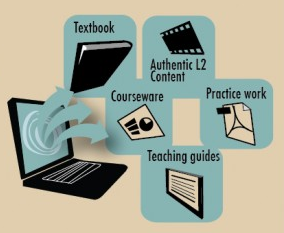
There is an increasing proliferation of open educational resources including online repositories, curriculum-sharing websites, sources for lesson plans and activities, as well as open alternatives to textbooks. More and more educators are harnessing the open content available for teaching, learning and research licensed as Open. Open Licenses make them free for people to reuse, revise, remix, and redistribute. OER has promising benefits of forwarding learning objectives by providing access to standards-aligned, easily available, flexible to use as well as customizable curriculum resources. All this along with huge cost-savings. Savings on part of no-cost resources as well as saving of time, efforts and money in duplicating common resources or editing a licensed sources.
However without a fine print, the OER would be nothing more than an open digital library without any overdue fines.
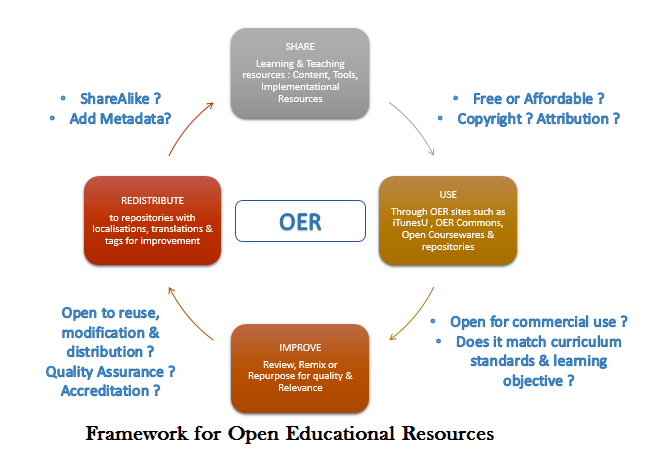
The fine print between the two include quality assurance as well as supportive learning tools. Without learners support tools, associated assessment objectives, activities and strategies as well as instructional principles and learning outcomes, the content will lose its context and lack the flexibility to adapt in different settings. After all we do not wish to create digital textbooks. Thus instructional and assessment tools Carnegie Mellon’s Open Learning Initiatives, UK universities’ Open Learning Project are some of the open education resources that have already appended learning and assessment supports. In terms of Quality Assurance, not all OER content fulfils standards in a way that it may be the best, complete and most comprehensible source for that topic. Clearly, when it comes to contributing new content as well as collaborating and improvising upon the existing stock, there are not many takers. There is a need to inculcate an essence of sharing. Great teachers do not hoard. They always believe in sharing their great content. You share your own pluses and you acquire the positives from others in the communities. This helps to enrich the available resource banks of all educators. Teachers sift through the best features of all downloaded content to create their own lesson plans. But there is a need to go a step ahead and publish that on the web.
The Open Education resources are all about creating, editing, improvising and expanding the available materials and putting it out on the web. Teachers can also use available rubrics for OERs to judge the quality of OER and evaluate them for college and career readiness standards. In doing so educators need to be mindful of the license of the content they are adding and/or contributing to. Open Licenses allow all members to effectively harness the benefits of collaborative improvisation. In fact it is helpful to tag and acknowledge the areas where the learning content has potential for additional support (both content and pedagogical tools-wise) and inviting community members to add to them. Open content is not just meant for teacher collaborations, students and self-learners should be welcome to make revisions and share useful insights, content and related resources as well. Students and self-learners can be valuable when it comes to proving a new take and re-energizing an old content piece.
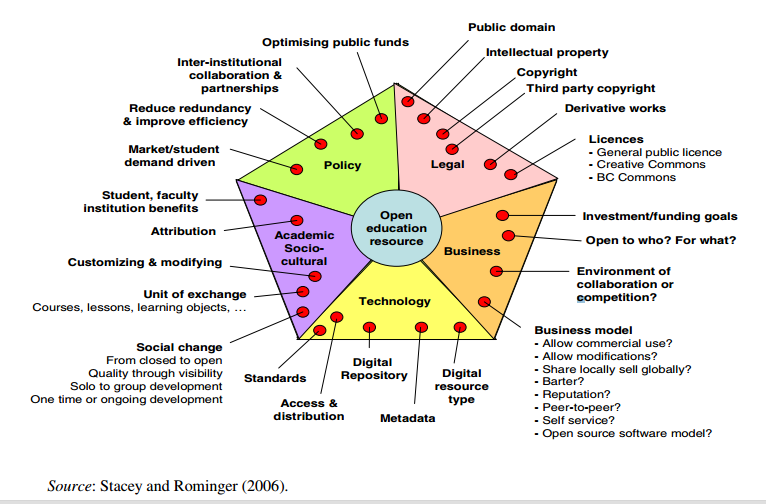
Here is how you can get ready for this trend : For educators getting started on this, Creative Commons is a great platform to publish and use free resources including text, images, videos and audio which can be legally shared and build upon depending on the associated copyright licenses. Other well know OERs include content coursewares such as MIT OpenCourseWare and free digital textbooks on Project Gutenberg. There are hundreds of other OER repositories including MERLOT, Connexions, iTunesU to access, publish and share engaging multimedia content such as apps, books, podcasts and videos as well as collect and grade assignments, Net Texts to organize OERs and teacher-created content in a course manager that can be easily distributed across students’ devices for download and offline viewing , OERCommons for teacher-created curriculum, CK-12 for digital texts called Flexbooks accessible across a variety of mobile devices and formats, ParisTech and more.
Micro Learning
2015 was the year of digital videos as they trumped ahead of all other digital platforms in terms of time spent online with an average US adult spending 1 hour 55 minutes every day on digital video content. The most popular genre was found to be comedy, educational and how-to videos.
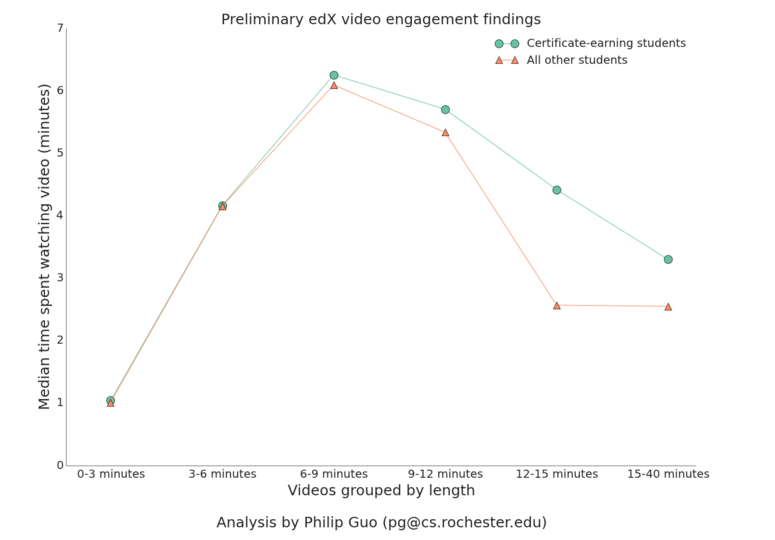
However, various studies have pointed out that the optimal video length is 6 minutes or shorter. Students watch the entire video if they are max of 6 minutes in length and engagement rate of videos drop sharply after the 6th minute-irrespective of whether students are enrolled in a certificate course. The key takeaway from these statistics is that it is not useful to copy the entire 45 minute classroom and create an internet video on the same. Another visible trend is that everyday new digital skills and disruptive technologies are cropping up in the job market for which there is no formally instantaneous teaching/training method available. It makes no sense to invest time in traditional personal learning and development methods to upgrade to tech skills that only have a half life of 2.5 years.
While all institutions were beginning to ride the wave of online learning through Massive Online Open Courses soon MOOCs’ dismal completion rates became even more notorious. The enrolment numbers basked gloriously at 230,000 to 250,000 but even less than 7% of those who enrolled went on to complete it till the end. This reflects a characteristic of present generation of learners. They are quick to search and assimilate any information but at the same time they are leaping impatiently to find quicker answers and shortcuts to valuable skills instead of deep learning. This change in learning behavior has sparked a new area within the e-learning domain known as Microlearning.
Microlearning is a direct implication of problem solving in technology-rich environments where it is conveniently possible to instantly access vast and multiple intelligent sources via internet such that the thirst for information precedes the pursuit of knowledge. Clearly millennial learners are looking for bite-sized micro-courses that can teach a specific skill or answer a how-to/why query in no more than 6 minutes. This is easier said than done. The content cannot be simply repurposed as-is and broken into segments of 6 minutes or lesser to qualify as Microlearning. There is more to this.
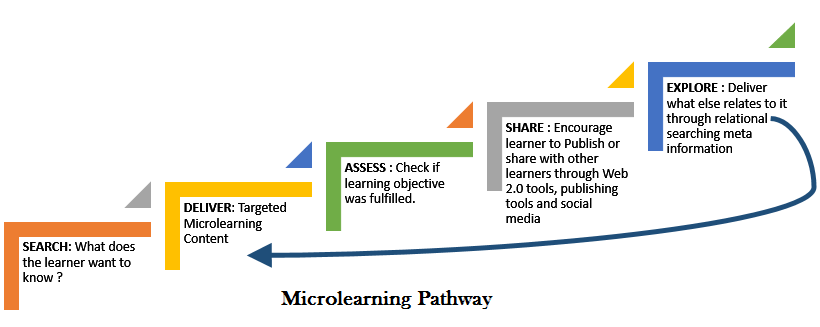
There is more to microlearning than just disintegrating a 45 minutes video in shorter chunks of no more than 4 minutes each. Creating or curating granular and rich content, with a view to brevity and clarity, such that it delivers the best and most comprehensive solution for the topic is arduous. A series of microlearning content should be designed recursively so as to serve a larger learning objective while individual micro-content units must also be tagged with a single learning objective that the learner gains after consuming the micro-content. This also aids with search, access and re-use. Introducing more than a single learning objective would either overwhelm the learner or elongate the content length.
While digital videos are the most preferred format of content consumed, microlearning is not limited in scope by the type of content format such as blogs, slideshows, podcasts as well as be accessible across devices, desktop, laptop, smartphones, tablets.
Here is how you can get ready for this Trend : Do not instantly get excited by the trend of Microlearning. There are only a few domains where Microlearning works most effectively. These typically involve reinforcement. It is absurd to think about acquiring complex skills such as learning a new language, or to operate a new software tool, a musical instrument or a new concept in just under 6 minutes. Microlearning approach works best for revising and re-enforcing an idea. Capture student’s attention with short duration animation videos for introducing course outlines. Have students work in team to create micro-presentations to succinctly capture important points of a topic. Integrate Microblogs of no more than 350 words to recapture the chapter you just finished. Experiment with ideas such as emailing “word of the day quizzes” to reinforce important terminology of the course. Microlearning videos such as 5 important diagrams you need to know, 5 fundamental graphs you must know will be hit last minute revision tools for students. However, be sure to create a focused self-learning path with proper meta data for relational searching.
Maker Movement
The Make Movement caught lot of attention and 2015 and its popularity would continue to swell in 2016 as well. Educators are bringing Maker activities to their classrooms with inclusions such as 3D printing, classroom coding, Arts integration and Design Thinking. Concepts like Maker Lab, Creativity & Innovation Week, 20% Time and Genius Hour are being increasingly incorporated in teaching spaces. All students have creativity and curiosity to produce innovative solutions to express their hobbies, skills and knowledge.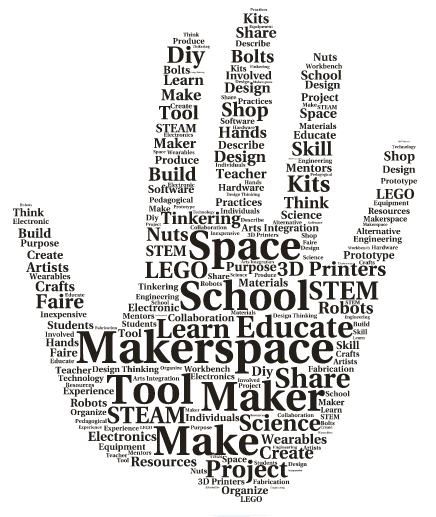
Maker Labs at schools offer an easy and affordable way to provide access to innovative, personal consumer technology products such as 3D printers, programmable robotic kits such as Lego Mindstorms, Arduino Microcontrollers, Rasberrie Pie, mobile devices such as Chromebooks, iPad, surface and even Apps such as to offer students (and teachers) opportunities to build and create more things. Making is an effective way to facilitate active learning and experimenting. Nothing embeds an abstract concept in a learner’s mind more than seeing it in action. In addition to the joy of seeing your imagination come to life, maker students enjoy benefits of collaboration, sharing, team work and appreciate “taking turns” to work with more sophisticated and costly kits. Students also learn the attributes of economizing and scaling up as they work together to create smaller elements and fit them together to complete a larger picture. Working with the latest technology gadgets offers teachers and students a chance to explore and learn together.
Maker spaces are not just for Science and technology skills, it can be equally incorporated in Classrooms of social science, arts, design. Think about creating with different materials using different techniques used by humans over various historical periods in an ancient history classroom. That would any day beat rote learning textbooks.
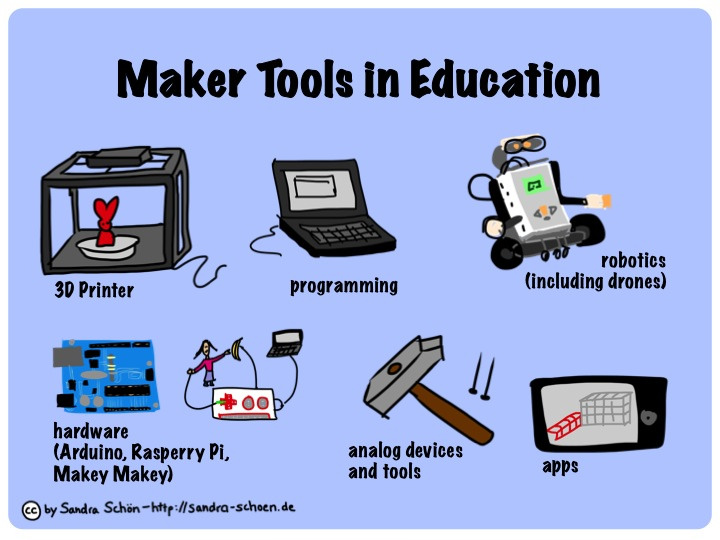
Teachers and Institutions often get dissuaded by the high cost of tools and technologies used in maker labs. The essence of a maker movement is not what you create or with what you create but it is the learning experience of those activities and projects. Students pick up concepts, experiment with them, and even fail many times. But every time they learn more to correct the faults and ultimately succeed. The ultimate joy of holding a finished product may be instantaneous but learning experience sticks forever.
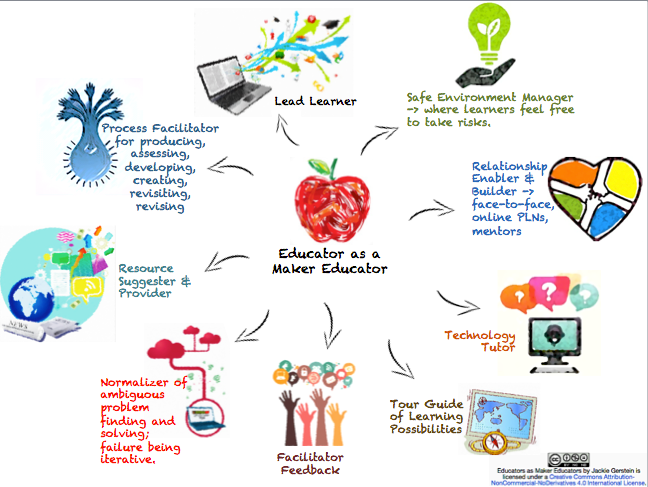 Here is how to get ready for this trend : It is not very difficult to kickstart an affordable maker labs. There are many arts-based activities, low tech projects that can be accomplished virtually free of cost. There are options to buy used tools on Craigslist or local garage sales in your neighbourhood. It is ok to own just a single unit of expensive gadgets such as Makerbot 3D printers on which students can take turns to build their ideas. Tinker with ideas for fund-raising, membership fees, bring-tools-from-home, just in time purchases, and seek contributory support from local community, organisations and parents. Schools can also start with smaller making program intended for a select few courses in the beginning. As other teachers and students start showing eagerness to get involved, it can be scaled on a school-wide level. This will keep the initial learning costs low and give institutions a true idea of the relevant tools and technology needed.
Here is how to get ready for this trend : It is not very difficult to kickstart an affordable maker labs. There are many arts-based activities, low tech projects that can be accomplished virtually free of cost. There are options to buy used tools on Craigslist or local garage sales in your neighbourhood. It is ok to own just a single unit of expensive gadgets such as Makerbot 3D printers on which students can take turns to build their ideas. Tinker with ideas for fund-raising, membership fees, bring-tools-from-home, just in time purchases, and seek contributory support from local community, organisations and parents. Schools can also start with smaller making program intended for a select few courses in the beginning. As other teachers and students start showing eagerness to get involved, it can be scaled on a school-wide level. This will keep the initial learning costs low and give institutions a true idea of the relevant tools and technology needed.
More Coding in Classroom
The New Education Bill recently passed into law by the government will pave way for increased inclusion of coding in classrooms. The Federal bill put computer science subject on par with subjects as Math and English in the definition of a well-rounded education for Every Child Succeeds Act; and to be considered so by state and policymakers in giving out federal funds. Currently only 1 in 4 schools teach computer programming. Currently there are 600,000 computing job openings all across compared to a dismal 38,175 computer science graduates who entered the workforce. Statistics point out that the computing job openings will grow in future to be over 1 million by 2022, disrupting all industries across all states. But the graduates’ figures will fall behind.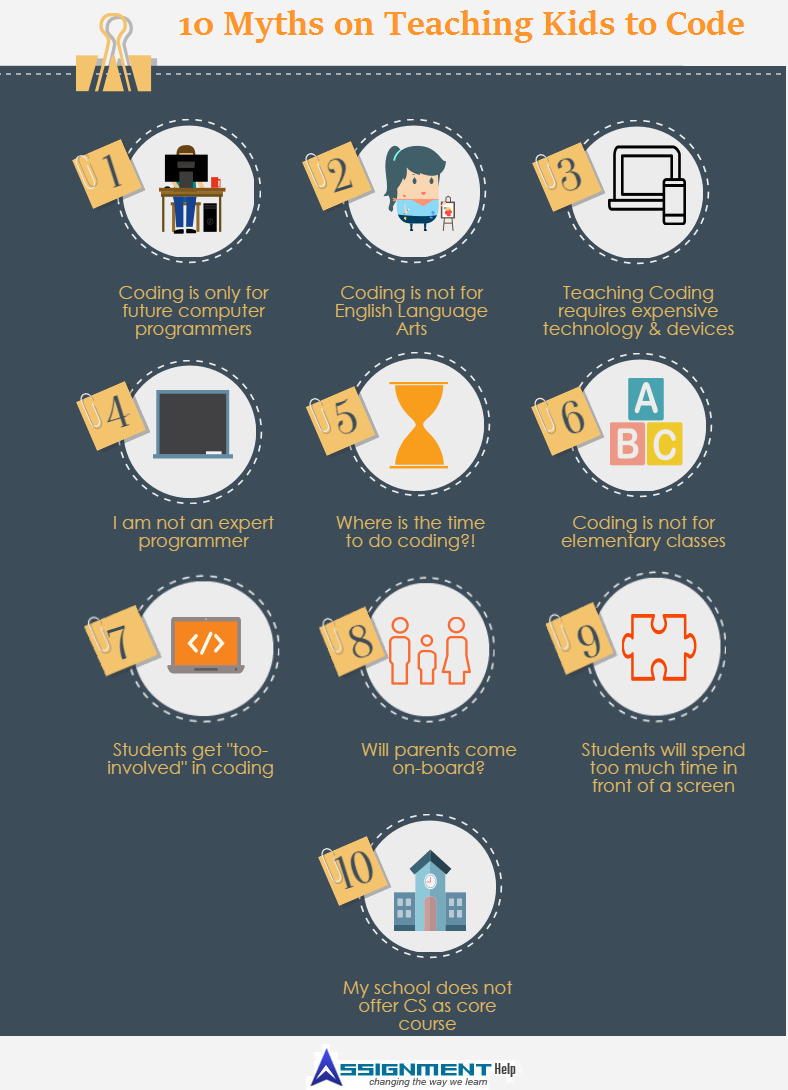 The College Board will also introduce a new AP Computer Science Principles course in Fall 2016 that will focus on fundamentals of computing principles and computational thinking. The benefits will accrue not in being able write computer programs but will develop creative thinking, problem solving abilities and inculcate a spirit of inquiry and design. The rigors of the curriculum will include programming, abstractions, algorithms, large data sets, the Internet, cybersecurity concerns, and computing impacts, the knowledge of which is indispensable for internet generation students.
The College Board will also introduce a new AP Computer Science Principles course in Fall 2016 that will focus on fundamentals of computing principles and computational thinking. The benefits will accrue not in being able write computer programs but will develop creative thinking, problem solving abilities and inculcate a spirit of inquiry and design. The rigors of the curriculum will include programming, abstractions, algorithms, large data sets, the Internet, cybersecurity concerns, and computing impacts, the knowledge of which is indispensable for internet generation students.
Coding in classrooms is also an important way to bridge the digital divide by allowing opportunity and access to students of lower socioeconomic communities. Increased inclusion of computer science and coding literacy in curriculum will improve opportunity sets for demographics of female, blacks, Hispanics as well as students with disabilities.
While the new stand-alone courses in computer science are needed, they are in no way enough. Coding literacy goes beyond the computer science classroom. Every classroom, every subject, every teacher can include coding in their curriculum with a little out of the box thinking. In Math classes, students are building and using Python Codes to solve equations and problems. In music classes, students are coding to compose musical scripts. In a Biology class students built an animated Ecosystem project using MIT’s Scratch. In an arts class, students are creating codes to generate 3D figures. Historical wars are being simulated, story boards are being coded as well. In another school a STEM girls group coded and created a language translator to help ESL students of their school.
Here is how you can prepare for this trend: If your school is not teaching computer science as a subject you can ask it to start computer science program. Teachers of various subjects simply need to re-orient their classroom activities to include elements of coding literacy. For ideas and inspiration on Teacher-led or student-led classroom coding activities check tutorials and resources provided by Code.Org. Plus if any of these doubts on teaching coding in classroom are holding you back, dispel them rightway! Also find out about Programmable Toys that can be used to teach coding.
The edtech predictions for 2016 promise modernistic classroom practices. However, pedagogy should always be put ahead of technology. Before jumping on to any trending bandwagons or investing in costly gadgets it is necessary to formulate the teaching objectives and skills to be achieved. Analysis is required in terms of what content needs to be delivered and how can it be actively and efficiently delivered and through which suitable tools and technology. Inclusions of technology need to be monitored for feedbacks and assessments of student learning, such that the isolated contribution of these education technology tools is positive. Ditch the tools that are not positively contributing, even if they are touted to be the next big things.
